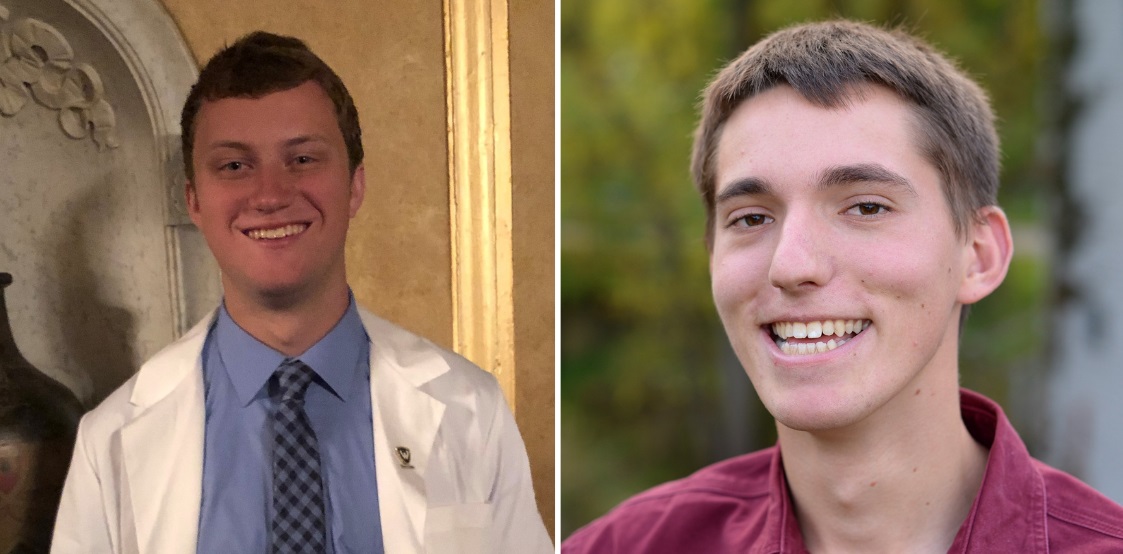
Service learning is an integral part of the curriculum at the Wayne State University School of Medicine. While the COVID-19 changed the way medical students at WSU approach the subject, the pandemic gave students the opportunity to be part of the team behind the retool.
The efforts, presented in poster format, were nationally recognized at the 17th annual Learning Communities Institute Conference as the best student presentation by unanimous vote.
“Learning Communities: Service Learning amid COVID-19,” was written by second-year students Daniel VanZweden and John Sherwood, with assistance from Director of Community Engagement Jennifer Mendez, Ph.D., an associate professor of Internal Medicine; and Co-Director of Service Learning LaTonya Riddle-Jones, M.D., an assistant professor of Internal Medicine.
The poster describes how, in less than a month, faculty and students worked together at the School of Medicine to transform the service-learning curriculum into a safe and structured telecheck-in experience. Learning Communities, or LCs, comprised of six students each, used telecheck-ins to contact families in the community and used a standardized questionnaire as a guide for assessing needs. LCs then designed a resource guide and presented it to their families. A reflection was completed to share what they learned about telecheck-ins in general. Survey results show most teams spent 10 to 30 minutes with their family. Food-related resources were one of the most common requests.
The virtual conference was hosted by the University of Texas Southwestern Medical School on Oct. 24. Designed for faculty, students and administrative staff, the conference featured a plenary address, workshops, oral presentations and a poster session. This year’s theme was “Supporting Learning Communities in a Virtual Setting.”
Service learning is part of the School of Medicine’s Patient, Population, Physician course, which includes clinical hours, project hours, outreach hours and seminars with reflections. The projects demonstrate the ability to work as a team, educate clients and/or patients during a health-screening event and reflect on the experience of care.
“The poster details how we scrapped the original plans for service learning and over the course of a month designed a new curriculum that would engage medical students with community members while maintaining social distancing,” VanZweden said. “Telehealth was used to connect teams of students, organized by their learning communities, with the local community, and students identified any needs that families and members of the community had. They then compiled a resource guide to help families and members of the community with any problems they had during COVID-19. This was a valuable experience to serve the community, as well as educate students about social determinants of health and problems in the local community during COVID, as well as the resources available to solve some of those problems.”
The winning research also was accepted by the American Medical Association Health Systems Science Student, Resident and Fellows Impact Challenge and will be included in the 2020 edition of “Medical Students, Residents and Fellows Making an Impact.” In June, it was featured in a keynote presentation at the Academy for Gerontology in Higher Education, where it also received a special mention from the conference organizers.
All medical schools in the United States are required by the Association of American Medical Colleges to incorporate service learning into curriculum, but the School of Medicine takes the requirement several steps further, seeing it as an opportunity to make a real difference in the community while also bolstering longitudinal mentorship among the four classes, including pairing first-year learning communities with second-year students.